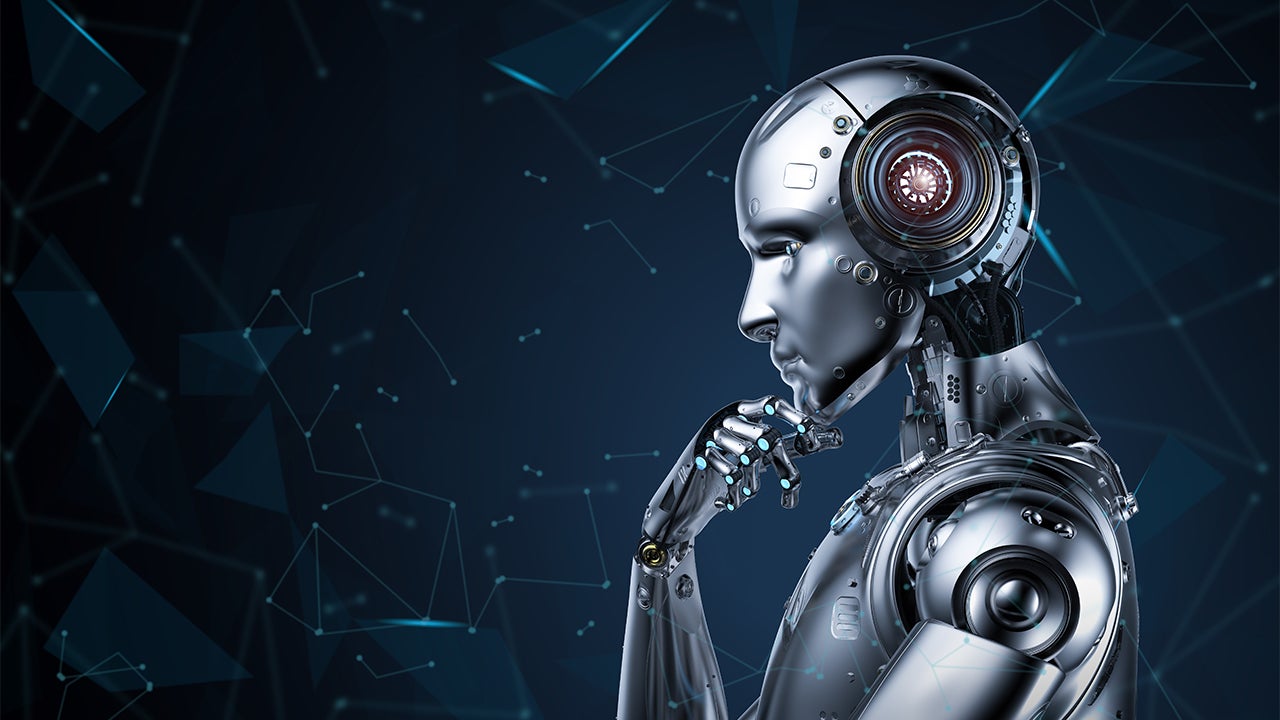From Code to Capital: Monetizing AI Through a Global Lens

Overview
- AI is already generating revenue, not just efficiency gains.
- Massive investments will be needed to realize the promise of AI.
- AI is already transforming work, and we believe it will continue to do so.
- We prefer investing in chips and applications rather than wires and connections.
A Q&A with Invesco’s Global Equity Portfolio Managers
Artificial intelligence (AI) adoption is accelerating across industries, powered by leaps in model design, computing and data access. Since ChatGPT’s launch in 2022, AI has moved beyond machine learning into generative tools that automate tasks and enhance productivity. With widespread adoption and heavy investment from tech leaders, AI is shaping up to be as transformative as the Internet. There are many ways to invest in this space, from companies in the advanced chip manufacturing supply chain, to hyperscalers investing in these chips and the data centers that enable AI innovation, to infrastructure providers building new power generation and data connectivity, and the model providers already generating billions in annual recurring revenue.
In this piece, Senior Portfolio Manager John Delano and Associate Portfolio Manager Rijn van der Walt of the Global Equity investment team explore the investment implications of AI’s rapid development through a Q&A format.
Q: How is the current AI boom similar to, and different from, the Internet bubble of the early 2000s?
A: Both represent a fundamental change in how technology transforms business and society. Like the Internet, AI introduces a fundamentally different way of doing things – this time through automation and productivity gains. However, unlike the Internet era, AI is an evolution built on over 15 years of machine learning progress, with real use cases already generating revenue.
The key difference is that the Internet created entirely new businesses from scratch (e.g., search engines, iTunes®, e-commerce), and it took more time than investors originally expected to figure out how to make money from them. AI is already embedded in monetizable use cases, and leading companies in this area are already generating a substantial amount of revenue and cash flows through the investments they’ve been making.
Q: How is AI being monetized – are companies benefitting from efficiency gains, or are there business models generating revenue from providing AI capabilities?
A: There are several companies already seeing revenue from providing access to advanced AI models for either consumer or enterprise clients. For example, OpenAI’s model is similar to a streaming service – users pay to access the technology, making it a consumer-facing business model. As of their most recent funding round, OpenAI disclosed that they had generated $13 billion in annual recurring revenue, and this could grow in the future. 1 Anthropic is another leading AI model provider who is more focused on the enterprise market, which has $5 billion in annual recurring revenue that could also grow substantially by the end of the year and has stated aggressive growth targets through 2027.1
Alphabet is another major AI player. Their Gemini model has been one of the top performing Language Learning Models (LLMs) available.2 While Alphabet is most well-known for their Google search engine, they actually have nine products that each have over 1 billion users, which gives them a platform to scale AI offerings.3 They’re already integrating AI into widely used services like YouTube, and in some cases, even giving away AI features to accelerate adoption.
Q: How are mega cap technology companies benefitting from AI?
A: Specifically looking at Meta and Alphabet, both companies have seen record-high returns on invested capital (ROIC), largely driven by capital expenditures in AI infrastructure. Meta’s recent earnings calls have highlighted how AI has helped increase engagement and better target ads on Instagram and Facebook, leading to higher conversion rates and ultimately higher pricing they can command from advertisers. Similar to Meta, Alphabet has been using AI to drive increased conversion of search ads. Alphabet’s Google Cloud business also has benefitted from the increased demand for rented compute, driven by the proliferation of LLMs and the computationally heavy training needs they have. For example, Google Cloud recently signed a $10 billion deal with Meta Platforms, where Meta would access Google Cloud’s servers, storage, and networking to train Meta’s AI models, including Llama.4 Meta already has similar deals in place with Amazon Web Services and Microsoft Azure.
Q: What is a hyperscaler?
A: The term “hyperscaler” refers to a large cloud computing provider that is in the business of providing on-demand computing power to its customers. They have the ability to rapidly invest in and deploy additional servers to their networks, expanding the scale of their offerings very quickly, hence “hyperscaler.” This is a select group, as there are very few companies globally with the technical expertise and capital expenditure budget to be able to provide the huge amount of computing power needed for AI model training and deployment.
The largest hyperscalers are some of the companies mentioned in the previous question: Amazon Web Services, a pioneer in cloud computing, Microsoft’s Azure, the number two player in the market, and Google Cloud, Alphabet’s cloud computing service. Oracle has been part of the hyperscaler ranks as well, following their announcement of a $300 billion+ deal with OpenAI to provide computing capacity and the substantial capital expenditures they’ll need to make to accommodate it.5 In China, Tencent Cloud is also considered a hyperscaler, as they offer cloud computing services to a large swathe of domestic Chinese businesses and are expanding their presence throughout southeast Asia and the Middle East. Tencent has an active partnership with DeepSeek, the leading homegrown AI model in China.
Q: How are you thinking about investing in the “picks and shovels” of AI?
A: With the vast scale of investment needed to accommodate large scale AI rollout, there are many different companies and industries that can benefit. Some of the beneficiaries over the past few years have been infrastructure providers such as:
- Utility companies that can generate the electricity needed to power AI datacenters
- Electrical supply companies that make the wires, transformers, and other components that go into these data centers
- Real estate companies that build and operate the datacenters which house servers and store data
However, we believe that these types of companies will only get a short-term boost to their prospects from the AI tailwind. The reason is that once all of this new data center and electrical capacity is built, the buildout will not continue at the same pace in subsequent years. We prefer to invest in the chip companies, who continue to innovate and roll out more powerful and energy efficient chips every two years or so. This forces a more frequent update cycle for the chips, which will be replaced at a much higher rate than the datacenters themselves, and which could contribute to a more sustainable growth dynamic for this part of the AI ecosystem.
Q: During the internet bubble of the late 1990’s, Cisco Systems was widely known as the “safe” play that would benefit from widescale internet adoption. Could NVIDIA face the same fate as Cisco in the post-2000 market?
A: Cisco Systems was the picks and shovels provider of the dotcom era. Their dominance in networking and connections led many investors to believe they would do well, regardless of how the technology space continued to evolve. This narrative briefly propelled the company to become the most valuable in the world by market capitalization in March 2000. The stock proved to be no “safer” than any other technology stock when the bubble burst, losing nearly 90% of its value from the peak and taking two decades to recover from those losses.6
Like Cisco, NVIDIA’s leadership in a transformative new technology has propelled it to become the most valuable company in the world at over $4 trillion in market cap today.7 Cisco stagnated as networking infrastructure needs plateaued in the years since 2000. In contrast, NVIDIA rolls out new chips every two years and these chips are fully depreciated over the course of 5-6 years. Though the future is, as always, uncertain, NVIDIA could continue to innovate even if the current enthusiasm for AI companies tapers in the years to come.
Q: What makes Taiwan Semiconductor Manufacturing Co. (TSMC) unique in the AI ecosystem?
A: TSMC is the only major player globally in advanced chip manufacturing, as competitors like Samsung and Intel have faltered in recent years. Its business model lends itself to an almost monopoly-like structure, in which the largest player is able to drive down costs, squeeze competitors, and re-invest in constantly improving its technology.
Q: What kind of differentiation is there between the various AI models out there?
A: The model layer is becoming the middleware of AI, where we believe most models will eventually converge in performance, leading to commoditization, except at the extreme high end. At this time, OpenAI’s ChatGPT, Google’s Gemini, and Anthropic’s Claude are the clear leaders based on third party research, and the rewards of this leadership may accrue to them over time. Others like Grok and open-source models such as Llama and DeepSeek are improving but face challenges in keeping pace with the top-tier players. The space is evolving quickly, and leadership is likely to change over time. As this technology matures, differentiation will come from engineering strength, innovation speed, and the ability to continuously update and scale.
Q: How are Language Learning Models (LLMs) evolving beyond just training on data?
A: Initially, LLMs were trained on static data and this limited how much they could improve. Now, models are starting to implement a technique called Test-Time Compute, which provides additional processing power for the model to learn during inference. This allows a smaller model to self-improve by using this inference boost and ultimately improves the models’ performance beyond just adding more data to the initial training phase.
Q: How fast is AI progressing in terms of human-level tasks and will AI replace jobs?
A: The OSWorld benchmark measures how well AI models can navigate a website relative to how fast humans can do it. The top AI models are currently scoring around 42%-43%, compared to humans at around 70%. Previous iterations of AI models scored just 14%.8 Once a model tops 10% in the OSWorld benchmark, it tends to ramp up very quickly. So, it is likely that AI will be able to navigate websites, and accomplish a variety of other tasks, as quickly as a human can in the near future.
However, we do not believe AI tools will be replacing humans any time soon. The next phase of the AI rollout is about replacing routine tasks, not people. Your computer will increasingly act as an autonomous assistant, handling mundane digital work and allowing employees to focus on higher value activities, driving greater productivity across a wide swathe of the labor force.
All data provided by Invesco unless otherwise noted.
Forward-looking statements are not guarantees of future results. They involve risks, uncertainties and assumptions, there can be no assurance that actual results will not differ materially from expectations.
The opinions expressed are those of the authors, are based on current market conditions and are subject to change without notice. These opinions may differ from those of other Invesco investment professionals.
This does not constitute a recommendation of any investment strategy or product for a particular investor. Investors should consult a financial professional before making any investment decisions.
Investment Risks
The value of investments and any income will fluctuate (this may partly be the result of exchange-rate fluctuations) and investors may not get back the full amount invested.






